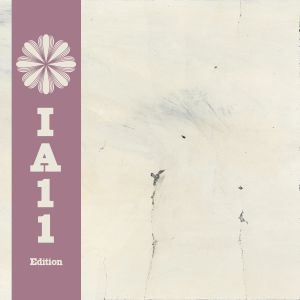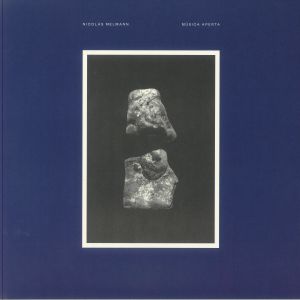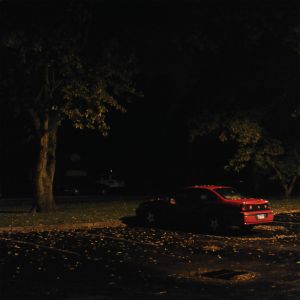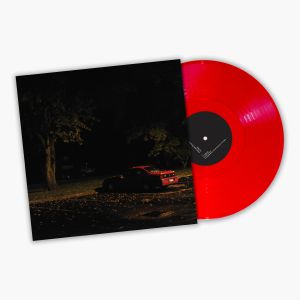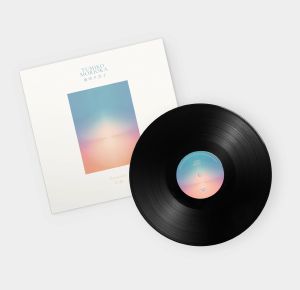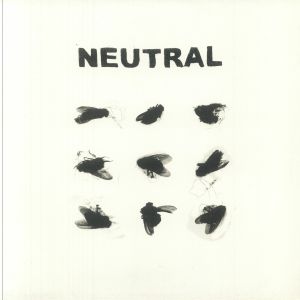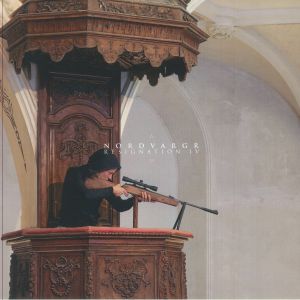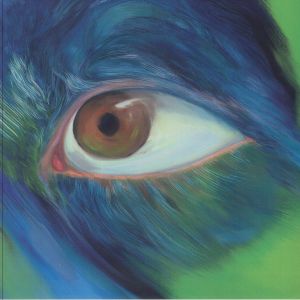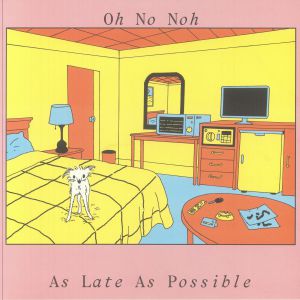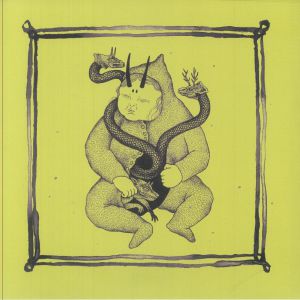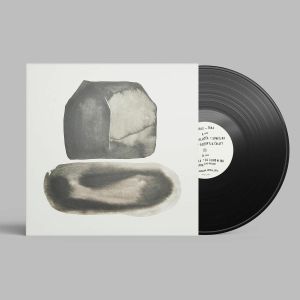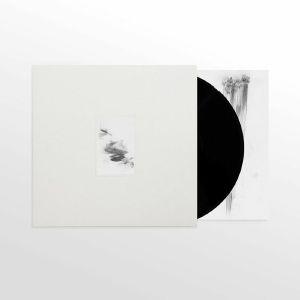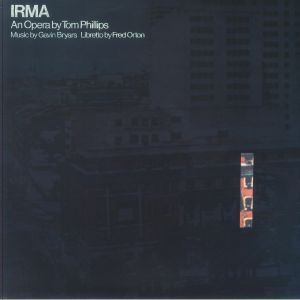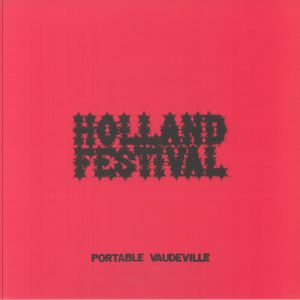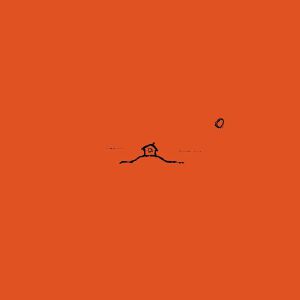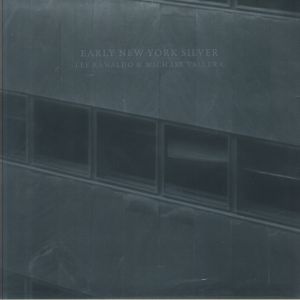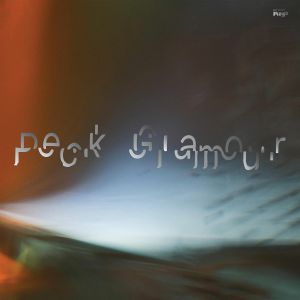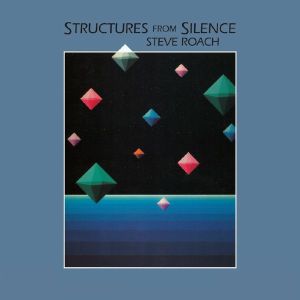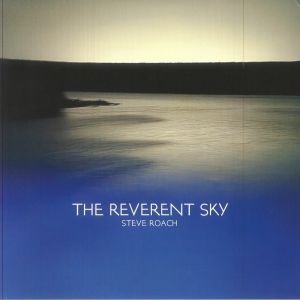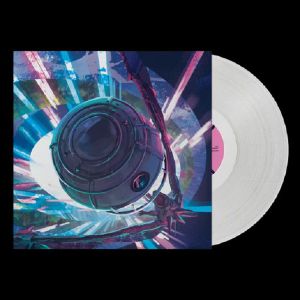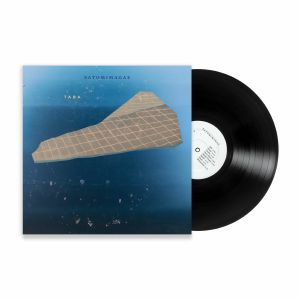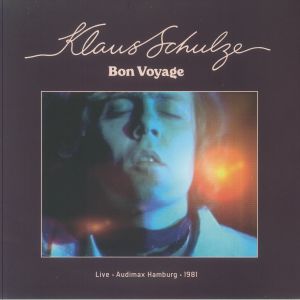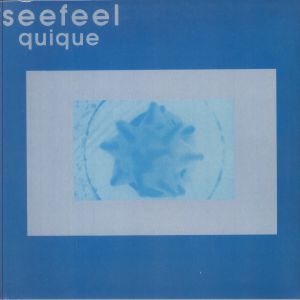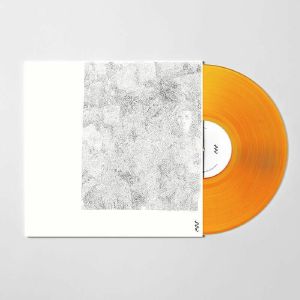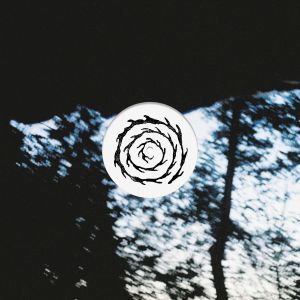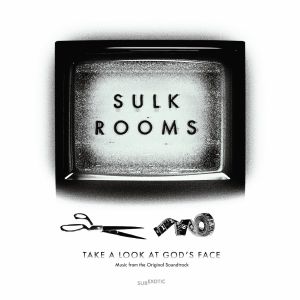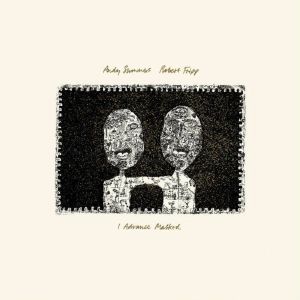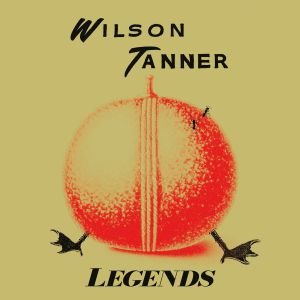Filter
Stock
Type
Music
Format
Label
Featured
Release Title
Price
Tags
New releases last eight weeks: Ambient/Drone
Ambient/Drone vinyl released in the last four weeks
Albums
Alternate Moon Cycles (AI11 Edition) (LP + booklet with obi-strip)
Cat: IARC 1LP11. Rel: 27 Mar 25
Review: The first ever release on the International Anthem label came by way of Rob Mazurek, genius musician of of the Jersey and Chicago jazz "schools". The trumpeter and multi-instrumentalist turned ever more avant-garde on this two-suite album, which was dedicated to the lunar cycle and heard him forgoing his signature brass for a monophonic cornet experiment, recorded at Chicago bar Curio. Documenting the performance, which was delivered alongside Matthew Lux on electric bass and Patrick Avery on organ, IA transport us right on back into the room with the trio, letting us in on a real-live experience of sidereal drones, selene harmonics and waning delays, paradoxically featuring in a suite which, both of whose titles suggest, always waxes crescent.
… Read more in stock $20.76
Review: Buenos Aires-born but now based in Barcelona, Nicolas Melmann explores sound's social and poetic dimensions through what he calls "transdisciplinary projects." He is inspired by Erik Satie's "furniture music" and his compositions create spaces of calm and contemplation as evidenced here on this lovely new blue LP. Musica Aperta blends acoustic and electronic elements with rich harmonies where soft textures meet delicate raspiness and it is divided into three parts. Each one slowly immerses you in time while echoing Satie's concept, Arvo Part's minimalism and Phill Niblock's roughness. It is a calming and cathartic escape from the fast-paced of modern life.
… Read more in stock $29.05
Cat: MYUCLP 001. Rel: 14 May 25
in stock $41.22
Cat: MYUCLP 002. Rel: 14 May 25
in stock $41.22
Review: Monolake's defining third LP Gravity was the second album to be released through the artist's own Imbalance Computer Music, as well as the first to feature Robert Henke predominately, as his former partner Gerhard Behles became increasingly consumed by the foundations of what become the Abelton Live empire. Tense, percussive digital minimal techno ensues, setting steady beats against rattling, materially modelled sound design - the record's resonant overtones sound like sprockets undergoing tidal to-and-fros of suspension and release - this record sought thematic refuge in a universal force of natural law: gravity itself. After a recent reissue of Monolake's first album Hongkong, this turn-of-the-century affair - appearing on vinyl for the very first time - offers a shattered, breathy brand of minimalism, perfect for shrunken heads and demanding DJs alike.
… Read more in stock $37.35
No Floor (LP + MP3 download code)
Cat: THRILL 625LP. Rel: 20 Mar 25
Review: Homaging mutuality in a robust creative dialogue, More Eaze and Claire Rousay add another flash of brilliance to a mesmerising string of allegorical LPs. Both born in San Antonio, Texas, Rousay and Eaze (Mari Maurice) riff (literally) on strummed country and noise rock echoes, reflecting an uptick in electronica artists sound-repainting the lonesome grasslands and desert great plains of the mid Southern United States. Yet on No Floor, there is an ardent sci-fi leitmotif too, producing a techno-realist vision reminiscent of a Texan Death Stranding and/or Simon Stalenhag painting. From 'kinda tropical' to 'limelight, actually' we hear shortgrass droughts, short-wave police radio chatter, and the bootup zaps of a beaten up pocket survivo-droid, as it scans the semidesert we alone must brave.
… Read more in stock $33.18
No Floor (limited translucent red vinyl LP (indie exclusive))
Cat: THRILL 625LPX. Rel: 20 Mar 25
Review: This collaborative LP is a beautiful and intimate work that draws on elements of Americana, experimental sound design and post-rock. The duo have a deep connection going back to their hometown of San Antonio, Texas and here create a unique sound with lush textures and emotional depth that, unlike their previous work, involved more found sounds. No Floor showcases their mastery of traditional composition and sound manipulation with tracks like 'Kinda Tropical' and 'The Applebees Outside Kalamazoo, Michigan' evoking nostalgia and the complexities of youth. All throughout this record, you can feel the duo's bond in its delicate, evolving soundscapes.
… Read more in stock $38.72
Review: Yumiko Morioka's Resonance was originally released in 1987 on Akira Ito's Green & Water imprint. Album, artist and label would all trifect to help along the enviro-ambient sound of which Ito was to become a part. For its quiescent but heartrending chamber pianos, Resonance was known for its use mostly in documentaries and as background music for spas, which hardly befitted the weight of Morioka's actual achievement at the time. By 1994, Morioka had moved to California, where she had shifted her focus to family life, unaware that Resonance had gained a new following outside Japan via online platforms. In 2017, when Morioka learned of this, she was recovering from a devastating California wildfire that destroyed her home and belongings. Despite the tragedy, she returned to Japan, worked in commercial music, and later opened a chocolate shop in Tokyo. Resonance, recorded on a Bosendorfer grand, blends improvisation with calm, introspective beauty, influenced by both Japanese environmental music and Western composers such as Erik Satie. The album was remastered in 2023, preserving its serene quality.
… Read morePlayed by: Juno Recommends Ambient/Drone
in stock $26.00
Review: Japanese artists Yumiko Morioka and Takashi Kokubo unite for a journey through blended piano, atmospheric synth and nighttime field recording. Both Morioka and Kokubo are pioneers of Japanese new age import, with the former lyricist, pianist and composer trailblazing with her sole 1987 album Resonance and the latter composer and musical environmentalist responsible for a string of geometrically-charged, fantastical LPs from 1980 onwards. Morioka herself makes a welcome return to music after taking a staunch step back to raise her family in the late 80s; her music has since been quietly cherished, and now Gaiaphilia evidences her not-lost ivorian flair, with her piano melding blissfully with pop-out sea- and soundscapes.
… Read more in stock $26.00
in stock $32.08
in stock $40.67
in stock $32.64
in stock $30.16
Huffin' Rag Blues (reissue) (limited numbered gatefold 2xLP)
Cat: ROTOR 090. Rel: 24 Apr 25
in stock $54.50
in stock $22.41
in stock $24.90
Halo: Combat Evolved (Soundtrack) (2xLP in slip-case)
Cat: LMLP 236. Rel: 03 Apr 25
Review: In the right circles,, Martin O'Donnell and Michael Savatori are living legends. Working with the iconic US video game company Bungie Inc, the pair put their names on the map - or maybe maps? - by creating soundtracks to a number of high profile titles, either as a duo or individually. O'Donnell is arguably the better known, or at least has the bigger online persona, but both composers deserve plenty of credit. Halo: Combat Evolved was the first title in what is now a huge and genre-defining first person shooter franchise, and the score reflects the emergence of video game music as an integral part of the on-screen action. O'Donnell and Savatori's efforts to ensure instrumentation dramatically changed with events in the game, which is by nature relatively non-linear, was a revelation. While their efforts to separate these into individual suites foresaw the rise of playable stories as films in their own right.
… Read more in stock $45.65
Review: It's been a long time since Halo: Combat Evolved revolutionised the word of first-person shooter video games. Graphically superior to anything that had come before it, the franchise also benefits from a spectacularly gripping storyline in which humans are outgunned and out-teched by a ruthless and uncompromising alliance of superiorly equipped alien races united as The Covenant. The titular Halo adds a kind of Prometheus air of uncertainty, as nobody really knows what it does until attempts to activate the galaxy-destroying weapon reveal something worse than death - a parasitic breed called the Flood. If all that was enough to blow everyone away in 2001, 2004 brought us to a whole new level of immersion in this future scape. Just like its predecessor, a big part of the impact was the visionary score by gaming soundtrack masters Martin O'Donnell and Michael Savatori. Now here it is in all its Gregorian chanting glory.
… Read more in stock $63.91
Halo 3 (Soundtrack) (heavyweight vinyl 3xLP in slip-case)
Cat: LMLP 238. Rel: 03 Apr 25
Review: Laced Records and Halo Studios partner up to bring the epic soundtracks of the original Halo trilogy to vinyl for the first time, remastering and revamping 83 original scores from Halo: Combat Evolved, Halo 2, and Halo 3. the music that defined a franchise is thus ethered in perpetuity. Weaving orchestral elements, prog rock, drum corps marches, and heavy metal, Halo presents a perfect bottling of angst and militancy; owing to its popularity with a certain teen gamer cohort, Halo 2's score especially made history as the first video game OST to chart on the Billboard 200. Now, each soundtrack is presented in its own sleeve with custom artwork, and comes in a collector's box adorned with a debossed Halo logo and silver laminate finish.
… Read more in stock $63.91
Halo Original Trilogy Soundtrack Collection (Soundtrack) (heavyweight vinyl 8xLP box set)
Cat: LMLP 235. Rel: 03 Apr 25
Review: The full 83 track suite from the original Halo trilogy of video games is here, bringing you an exemplary score befitting of one of the most acclaimed Arcadian future combat shooter game series in the world. Now you can figuratively "don" your very own sonic Spartan supersoldier suit, as the game's trademark musical motifs - mystical Gregorian choral chants, missionary orchestral movements, gloried verging-on-prog upswells and downturns - are laid in pristine electronica-augmented fashion, by composers Martin O'Donnell, Michael Salvatori and C Paul Johnson. The midpoint of the record marks a highlight, where the Halo 2 soundtrack heard a long list of A-list musician collaborators, marking a heavy metal and nu-metal sojourn.
… Read more in stock $173.18
Played by: Juno Recommends Downtempo
in stock $22.12
The Near End The Dark Night The County Line (silver vinyl LP + insert)
Cat: DRFT 15. Rel: 31 Mar 25
in stock $35.69
in stock $26.00
Selected Recordings From Grapefruit (gatefold 180 gram vinyl 2xLP + booklet + MP3 download code)
Cat: KR 100. Rel: 20 Mar 25
Review: For the first time on vinyl, through Karl Records, comes a limited edition and furtive Yoko Ono retrospective, in conjunction with the over-100-strong, Sweden-headquartered ensemble and community network The Great Learning Orchestra. These unlikely recordings were made at the time of the musician and performance artist Ono's 1964 multimedia collection Grapefruit, a cornerstone of what would later become known as "conceptual art". Grapefruit itself is a large artist's book, with a large vellum spine and browned parchment paper; it contains a series of "event scores" that outline, rather than permit the performances of, many different performance art pieces. The effect is apocryphal and ominous, as though the real performance of these instructive works may have accursed or deleterious effects. "Like a musical score, Event Scores can be realized by artists other than the original creator and are open to variation and interpretation"; and yet, Ono's book is a one of one, having never been reproduced or thus made collectable. Pre-dating John Cage by about a decade, the "event scores" described therein have now been performed by The Great Learning Orchestra, where hardly any of the performances / pieces have ever been captured sonically or laid to disc. This record changes all that, realising Ono's bewildering text instructions as tremulous suites, made up of clattering material hits and harrowing string instrumental assaults.
… Read more in stock $27.12
Kiso Three Rivers (180 gram vinyl LP + MP3 download code limited to 200 copies)
Cat: FIELD 36. Rel: 08 May 25
Review: Calling the curtain on Field Records' Waterworks trilogy, Yui Onodera turns his ear to confluences of hydrology and history, dedicating his latest record to Japan's Kiso Three Rivers and their transformation by 19th-century Dutch engineering. The Kiso, Nagara and Ibi rivers, once prone to catastrophic flooding, were reshaped under the guidance of Johannes de Rijke, whose work helped protect Nagoya from seasonal deluge by 1912. Onodera, known for his nuanced sound architecture, approaches this subject with a finely honed ear for subtlety, layering quiet field recordings with fuller instrumentation, evoking the widening of a river from brook to strait. The A-side's bell tones provide a sensory-meridian intimacy, processed alongside guitar, and ethereal pads; while the B-side's contradictorily colossal quietude makes itself across two long-form studies, which drift through sampled water and restrained electronics.
… Read more in stock $25.44
Arvo PART / TONU KALJUSTE / MARIA LISTRA / ESTONIAN PHILHARMONIC CHAMBER CHOIR / TALLINN CHAMBER ORCHESTRA
Tractus (2xLP + booklet)
Cat: 485916 7. Rel: 22 Apr 25
Review: In celebration of Arvo Part's 90th year, his latest release showcases the Estonian composer's continued exploration of minimalist, spiritually charged sound . Part's work has always sought to blend the sacred with the secular, and this collection of new renditions brings forward the timeless resonance of his choral and orchestral compositions. Opening with 'Littlemore Tractus,' based on John Henry Newman's reflections, the piece sets the tone of quiet, introspective change that permeates the entire work. His music, a dialogue between sound and silence, invites profound contemplation, with the Tallinn Chamber Orchestra and the Estonian Philharmonic Chamber Choir under Tonu Kaljuste's direction offering nuanced, deeply attentive performances. Compositions like 'Vater unser,' showcase Part's ability to transform liturgical text into transcendent musical experience. There's an undeniable spiritual gravity in pieces such as 'Cantique des degres' and 'Sequentia,' where strings and vocals weave in delicate yet forceful patterns, revealing a steady undercurrent of renewal. The rich textures in these works evoke both a longing for and a reconciliation with the past, capturing Part's life-long exploration of sacred music's dialogue with the world. The album culminates with 'Vater unser,' an evocative reworking that brings together choir, strings, and piano, offering a meditative close to an album that is as much about reflection as it is about the continued forward momentum of Part's artistry. Recorded in Tallinn's Methodist Church, this latest chapter is a continuation of the Part-Eicher partnership that has defined so much of his career, expanding the legacy of albums like Tabula rasa and reinforcing Part's place as one of the most significant voices in contemporary classical music of the 20th and 21st centuries.
… Read more in stock $46.30
Review: Parus is a Belarusian ethno-ambient project blending pagan songs with modern soundscapes and Zara is their debut album. Led by ethnographer and folk singer Hanna Silivonchyk, the record features traditional Belarusian songs in various dialects, all accompanied by synths and field recordings crafted by Anton Anishchanka. The tracks were gathered during ethnographic expeditions across Belarusian national parks, and songs like 'Soniejka' and the title cut offer intimate reflections on life, love and mythology. It connects to the past while maintaining a deep personal edge that makes Zara a fascinating exploration of Belarusian culture.
… Read more in stock $24.90
The Air Outside Feels Crazy Right Now (LP in embossed sleeve)
Cat: ASM 08LP. Rel: 04 Apr 25
Review: Perila returns with a reflective spiritual successor to her 2022 album that comes on Vaagner's sister label A Sunken Mall. The album takes in eight tracks produced between 2021 and 2023 and they all do a fine job of conveying a serene vulnerability with its drifting, ethereal soundscapes smeared with echoing voices, droning guitars and resonant textures. It's like a whispered conversation during quiet moments and once again makes for a world that doesn't need to be understood, only felt. The Air Outside Feels Crazy Right Now reminds us that finding inner peace through music can counter the chaos of the external world and help turn fragility into strength.
… Read morePlayed by: Alexis Le-Tan, Juno Recommends Ambient/Drone
in stock $39.82
Cat: DIALP 934. Rel: 20 Mar 25
in stock $28.76
Holland Festival (remastered) (LP + insert)
Cat: IE 13. Rel: 26 Mar 25
in stock $26.28
Review: Posuposu Otani is a mysterious throat singer and songwriter from Japan who dropped his debut physical album in March. By merging open-tuned guitar, Kohkin (aka the Jew's harp) and traditional throat singing, Otani creates a sound filled with rich harmonics and fluid rhythms that all evoke the mood of Impressionist art and explore themes of freedom, nature and self-discovery. Influenced by his punk roots, worldly travels and immersion in mountain life, Otani's storytelling music reflects his deep connection to the natural world and makes for a far-journeying listen.
… Read more in stock $22.12
Suicide Squad (Soundtrack) (limited numbered 180 gram audiophile 2xLP (comes in different coloured vinyl, we cannot guarantee which one you will receive)))
Cat: MOVATM 111R. Rel: 24 Apr 25
in stock $43.44
Where Things Are Hollow: No Tomorrow (4xLP box set)
Cat: LPS 41. Rel: 13 May 25
Review: If you at first mistakenly read the title of the new Pye Corner Audio box set as "Where Things Are Now: No Tomorrow", you're not alone - Martin Jenkins' effortless blend of retro-nostalgia and forward-facing production is a keen match for reflexive cynicisms like this. His use of sizzling vintage audio-tropes could only have been achieved in the 21st Century and helps foster a reinstated optimism. The name of the full series is actually Where Things Are Hollow; and while two volumes have been released already, a third original one now comes added here, on top of a full remix roundoff featuring Alessandro Cortini, Kaitlyn Aurelia Smith and John Talabot, producing this rather banging four-volume set.
… Read more in stock $97.11
Review: Recorded at the legendary Eglise du Saint-Esprit in Paris, Blue Veil is the very first time we've been given a record fully dedicated to the incredible solo cello work of Lucy Railton. A spectacularly talented composer who is a master of the world's most mournful-yet-beautiful instrument, this is as much of a heart-stopping performance as it is a concept work of art. In many ways, Blue Veil is an experiment in resonance. If it were synthesised, we might refer to it as drone, although by nature the label infers a level of dullness. Here, we're talking about the natural refrains of an orchestral sunrise, the ebb and flow of contemporary classical tides. We're invited in, hypnotised, lulled and then let go. Free to wander back into the world after a brief respite from its relentless pace.
… Read more in stock $29.86
Played by: Juno Recommends Ambient/Drone
in stock $31.26
Peck Glamour (LP + MP3 download code with obi-strip)
Cat: EMEGO 317LP. Rel: 04 Apr 25
Review: Rivet's newest album for Editions Mego blends optimism and negation, emerging sanguinely from a period of personal tragedy and disillusionment undergone by the artist. Mika Hallback, a key figure in the Swedish underground, first gained attention with industrial techno as Grovskopa before shifting to experimental work, including On Feather and Wire (2020). After the loss of fellow musician Peter Rehberg and his dog Lilo, Hallback created the somber L+P-2 (2023), and now Peck Glamour marks his return, coming reinfused with hope and exploration. Drawing on punk, industrial, techno, and trauma, the album combines synthetic and organic elements, with 'Orbiting Empty Cocoon', with its tugging, metal ballistic sound-rooms sounding like an Au-technic, cybernetic ritual, a dance anthem 'Patitur Butcher' and 'We Left Before We Came' concluding on comparatively layered zoonotic notes; posthuman synthesis backed by birdsong.
… Read morePlayed by: Sandwell District
in stock $32.08
Structures From Silence (40th Anniversary Edition) (remastered) ('sea blue & ultra clear' vinyl LP + booklet)
Cat: 617026 041537. Rel: 29 Apr 25
Review: It's hard to believe that Steve Roach's landmark space ambient exploration is now four decades young. Emphasis on the young, considering we're getting new releases through that sound pretty similar. No disrespect to those that do - the point is Structures From Silence was so massively ahead of its time it still feels like the rest of us are catching up. Floating on a dust ring somewhere close to Saturn, maybe, this is lush, dreamy, cosmic synth stuff to lose yourself in. Just be sure there's a yurt close by, because this one's all about lying down and staring into your own thoughts. An exercise in escapism, without needing to move a muscle. In 2025, there's plenty of off-world talk as Earth buckles under the weight of capitalism. Little do they know some of us left that place behind decades ago.
… Read more in stock $33.18
Played by: Juno Recommends Ambient/Drone
in stock $44.26
Monarch: Legacy Of Monsters (Soundtrack) (gatefold white vinyl LP in spot-varnished sleeve with obi-strip)
Cat: MOND 327B. Rel: 06 May 25
in stock $61.14
Review: On her sixth full-length album, Tokyo's Satomimagae continues to refine her idiosyncratic fusion of folk, ambient and sound collage into something singular and quietly expansive. Hailing from Japan's acid-folk scene, Satomi's music often blurs the edges between the intimate and the cosmic, the rooted and the abstract. Taba floats beautifully in that liminal space. Rather than traditional song structures, she presents Taba as a series of open-ended vignettes, each radiating with a soft-focus clarity. The arrangements are centered around fingerpicked guitar, hushed vocals and ambient textures that are deceptively gentle. Closer listening reveals a rich interplay of glitchy electronics, subtle field recordings and haunted atmospheres. Tracks like 'Many' drift on echoing voices and vaporous folk melodies, while 'Tonbo' finds a summery sweetness in its fusion of pop and pastoral folk, complete with the sound of nature rustling at its back. 'Omajinai', perhaps the emotional core of the album, embraces traditional pop structure only to dissolve it into a haze of nostalgia and spectral warmth. Taba is not background music, it asks for deep listening, but rewards you with quiet truths and melancholic beauty.
… Read more in stock $26.00
Bon Voyage: Live Audimax Hamburg 1981 (2xLP + booklet)
Cat: 257321. Rel: 01 Apr 25
Review: Renowned German electronic music pioneer Klaus Schulze enjoyed a lengthy touring spate after the release of his 1977 album opener 'Velvet Voyage'. Made up of synth chimes in sequence - icicling cycles - the Mirage frontispiece served to irreversibly weld the idea of the "voyage", and connotations of "journeying" to Schulze's music as popularly imagined. Later in 1981, Bon Voyage would take form: this was a closing tour performance at the Hamburg Audimax concert hall, concluding a two-week tour through Germany, the Netherlands, Belgium, Luxembourg, Switzerland and France. One of many bonnie voyages undertaken by Schulze in his lifetime, it would nonetheless prove unforgettable and salient among them; from 'The Journey Begins' through to the templar titillations of the three-part 'Bon Temple' and the ex-sanguine 'Moulin Bleu', this is a live synthetic forget-me-not.
… Read more in stock $38.46
Der Wald In Mir (Soundtrack) (LP + booklet + insert + MP3 download code limited to 200 copies)
Cat: GLR 13. Rel: 28 Mar 25
in stock $45.92
Review: Bridging the gap between guitar-driven rock and ambient techno - they would later become the first artist to bring guitars to Warp Records - Seefeel skillfully blended electronic loops with post-psychedelic basslines, mermaid-like vocals from Sarah Peacock and intelligent percussion. Their debut album for Too Pure in 1993 was both ahead of its time and timeless, offering a quiet revolution of repetition and downtempo somnolent soundscape, a record that remains beautifully undated. Tracks like 'Imperial'. 'Industrious' and 'Charlotte's Mouth' demonstrate Seefeel's knack for using guitars as electronic complements, layering hypnotic smears of feedback with Peacock's intimate whispers. The eight-minute opener, 'Climatic Phase No. 3', floats with barely-there percussion and a lazy, dreamy melody, while 'Filter Dub' delivers a sublime, drowsy bass line perfect for slipping into sleep. The album's structure leans into drone and quirky ambience, creating an experience more akin to a dream state than a traditional rock record. Quique feels proto-IDM, a precursor to the ambient-motorik noise-pop aesthetic that artists like Tim Hecker and Mouse on Mars would explore. Seefeel's early work remains a blueprint for electronic experimentation, demonstrating that the band's forward-thinking approach helped define a genre that continues to defy easy categorisation. Quique is not just a product of the 90s - it's a sonic vision that still feels fresh and boundary-pushing today.
… Read morePlayed by: Joachim Spieth, Shadow Dancer
in stock $31.26
Greyhound Days (translucent orange vinyl LP + MP3 download code limited to 300 copies)
Cat: MONDOJ 29LP. Rel: 28 Mar 25
Review: Featuring a tenor saxophone and digital keyboard with subtle additions of other instruments, it offers up an effortless and expansive exchange between Shiroishi and Kurek whose collaboration first began during a BBC Radio 3 remote session aired on Jennifer Lucy Allan's Late Junction show in February 2024. The easy chemistry between them continued after the show and soon resulted in tracks that celebrate intuitive expression and the tenderness of first takes. Across these immersive sounds jazz sounds their sense of trust and discovery is there for all to hear as their sonics elegantly complement each other's voices and gestures.
.
… Read more.
in stock $34.86
in stock $38.46
Spool (LP + insert + perfume sample limited to 300 copies)
Cat: SP 05. Rel: 07 May 25
Review: Florian TM Zeisig's latest project has been created with perfumer Angel Paradise so blends scent and sound into a multi-sensory experience rooted in the Bavarian Alps. While living in the rural village of Hinang, Paradise studied alpine plants to craft natural perfumes while Zeisig composed Spool, a reflective suite inspired by nostalgia, landscape and the duo's impending departure. Combining field recordings, ambient loops and blurred instrumental vignettes, the music has a wonderfully dreamlike, pastoral atmosphere that has your head lost somewhere beautiful. Paired with the fragrance that comes with it and captures the oily, floral essence of their environment, this is a poignant meditation on memory, nature and the fleeting beauty of physical presence that is unlike anything else you will experience this year.
… Read more in stock $27.94
The Pocket Of Fever (reissue) (LP with obi-strip)
Cat: AMS 001. Rel: 28 Apr 25
in stock $33.18
in stock $21.86
in stock $22.12
Review: Wilson Tanner steps on solid ground with Legends, a pastoral odyssey steeped in the rhythms of South Australia's Manon Farm. Swapping coastal breezes for the dusty toil of the vineyard, the duo channel the grit of farm life: dirt-crusted boots, crackling radios, and the far-off hum of summer crickets. Their previous works basked in suburban lethargy and nautical drift, but here, the focus is on the raw textures of agricultural labor, where ducks and dogs roam, tractors rumble past, and stainless steel tanks glint in the sun. Made entirely off-grid, the Manon sessions repurpose wind, brass, balalaika, and synth, rigged together with wire and tape. Legends distills the essence of natural winemaking into sound: feral, unfiltered, and alive with imperfections. Overflowing with rustic charm and irreverent humour, it's a heady swirl of folklore and fermentation, bottled straight from the land.
… Read morePlayed by: Piers Harrison
in stock $26.28

 USD
USD





